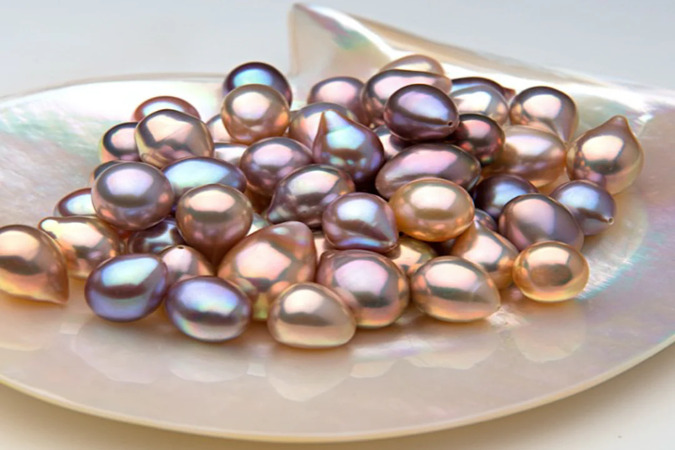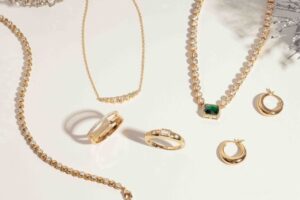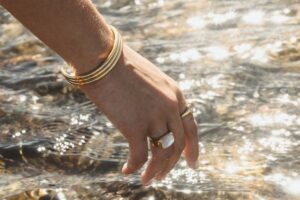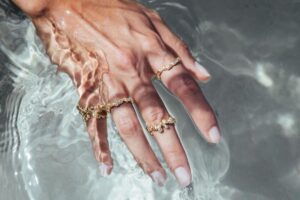Pearls is a timeless, elegant piece of jewelry, and two of the most popular types are shell pearl and freshwater pearl. While both of them are timeless, beautiful, and eye-catching, they are distinct in their origin, appearance, size & shape, color & luster, durability, and price.
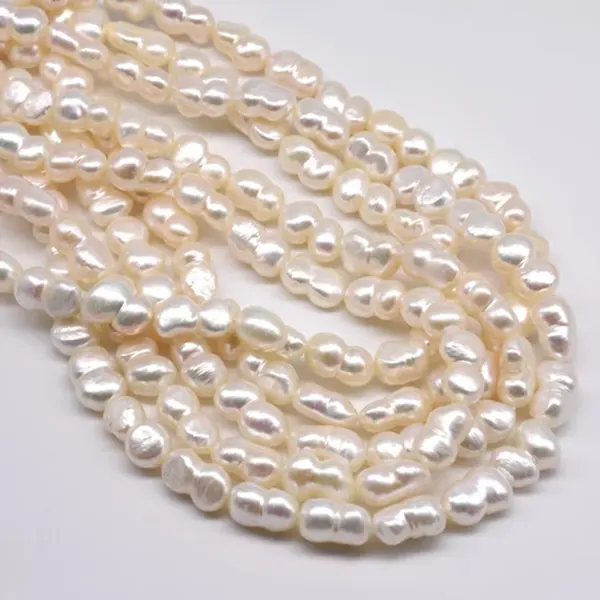
Understanding the differences between these two types of pearls will help you make an informed decision when choosing the best option for your needs. In this article, we will discuss shell pearls vs freshwater pearls, providing clarity on their differences.
What Are Shell Pearls?
Shell pearls are man-made shells, and are commonly called “Mother of Pearl.” These types of pearls are imitations of natural pearls. They are formed from the inner lining of oyster shells.
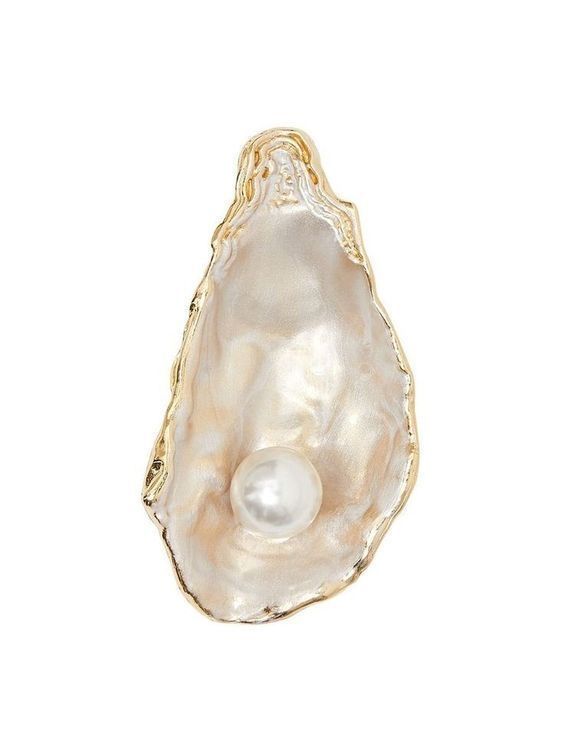
Source: Pinterest
How Is Shell Pearl Made?
Shell pearl is made from grinding the insides of oyster shells into powder form. The powder is then shaped into different shapes and sizes. After that, they are colored and coated with natural pearl nacre to create a lustrous and durable surface.
This manufacturing process allows for greater control over shell pearls’ final appearance, allowing for uniform shape, size, and color. A single freshwater mussel can produce up to 50 pearls. That’s why this pearl type is a reasonable option for jewelry pieces needed to resemble natural pearls at a lower price.
Are Shell Pearls Real Pearls?
No, shell pearls are not real pearls. They are man-made pearls created to mimic natural pearls. While they are made using materials from oyster shells, they are not formed organically within a mollusk or oyster. Meanwhile, shell pearls are not plastic pearls, they are much more natural and stunning than plastic pearls, though are more expensive.
What Is Freshwater Pearl and How Is It Made?
Freshwater pearls are pearls formed in freshwater mollusks like mussels found in lakes, rivers, and ponds. They organically form when an irritant like a parasite or grain of sand enters the mollusks. In response, the mollusks form layers of nacre on the irritant. Over time, these layers result in forming a pearl.

Freshwater pearls are in two types: natural freshwater pearl and cultured freshwater pearl.
Natural Freshwater Pearls
Natural freshwater pearls are formed in freshwater mollusks (mussels) rather than oysters. They are extremely rare because they are formed without human intervention. Due to constant fishing and pollution, natural freshwater pearls are becoming increasingly scarce, making them highly valuable.
Cultured Freshwater Pearls
Cultured freshwater pearls are grown artificially in pearl farms. In curated pearls, a small bead is deliberately inserted into the mollusk to propel nacre production. Then, the mollusk is returned to the water, where it will cover the irritant with layers of nacre, resulting in the creation of a pearl.
Cultured freshwater pearls are the most widely produced and cheapest freshwater pearl type today. A single freshwater mussel can produce approximately 40 cultured pearls per harvest. Hence, why most of the freshwater pearls on the market now are cultured.
Where Do Freshwater Pearls Come From?
Freshwater pearls commonly found in easily accessible freshwater in large quantities. The vast majority of freshwater pearls on the market today are from pearl farms in Central and Eastern China. However, a small percentage of pearls are grown in freshwaters and rivers in Japan and the United States of America.
Are Freshwater Pearls Real Pearls?
Yes, freshwater pearls are real pearls directly cultivated to natural pearls. They are made naturally inside freshwater mollusks and oysters that live in lakes and rivers.
Even though the vast majority of freshwater pearls are cultured, they are still real pearls because they are formed with the help of humans and composed of the same nacre as natural freshwater pearls. The only difference is the production conditions they undergo.
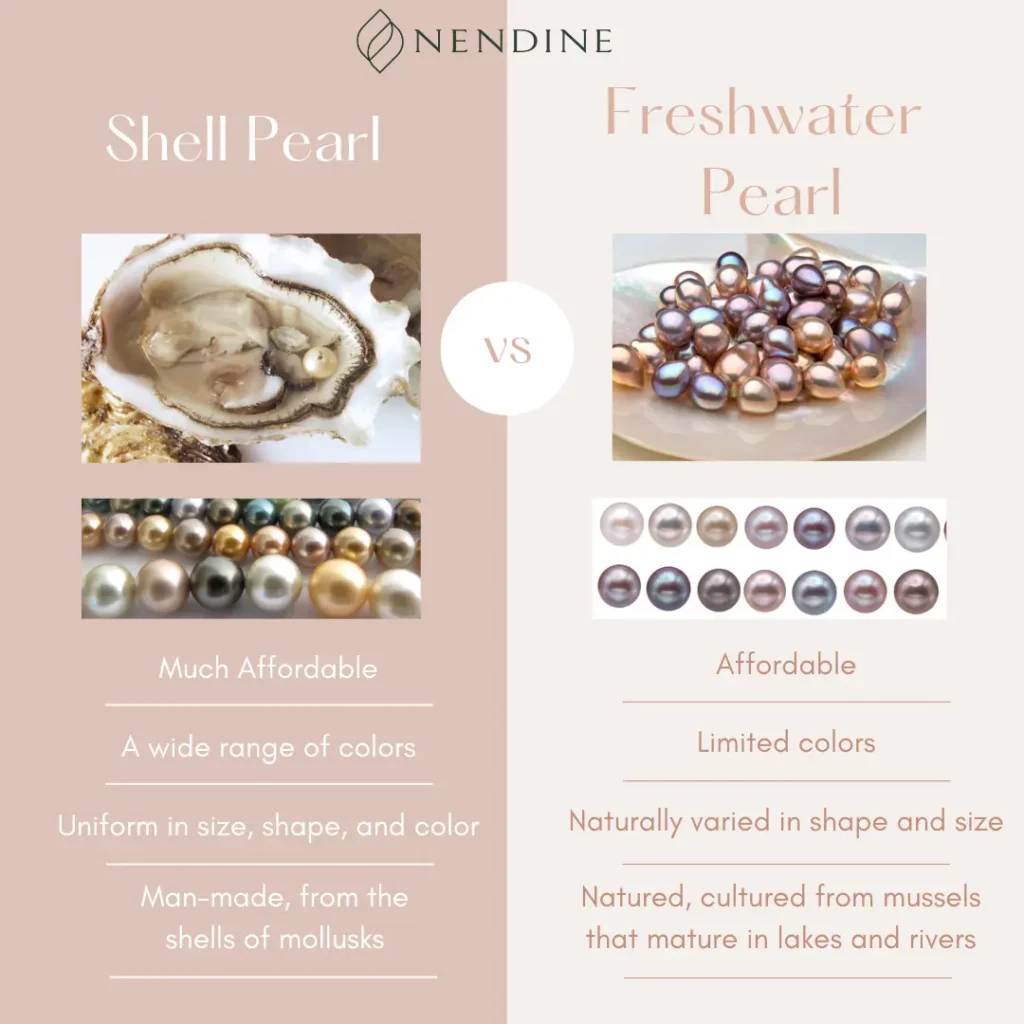
Shell Pearls vs. Freshwater Pearls: What’s the Difference?
Now, let’s dissect these different types of pearls using key characteristics like their origin, appearance, size & shape, color & luster, durability, and price.
Origin
- Shell Pearls:
Shell pearls are man-made. These synthetic pearls are derived from the shells of mollusks. They are crafted from beads coated with layers of grounded nacre (mother of pearl), which makes them have the appearance of real pearls.
- Freshwater Pearls:
Natural freshwater pearls are formed inside freshwater mussels, typically grown in lakes and rivers. Cultured freshwater pearl is artificially grown in plant farms. These pearls are derived when an irritant enters the mussel, and the mollusk covers it with layers of nacre.
Appearance
- Shell Pearls:
Shell pearls are highly uniform in size, shape, and color due to its man-made production process. A sea shell pearl has a smooth, polished surface with uniform coating of nacre, giving it a flawless appearance.
- Freshwater Pearls:
Freshwater pearls are naturally available in various shapes and sizes, often with irregularities. They can come in oval, round, or distorted shapes, adding to their organic beauty. These pearls have minor imperfections or dimples on their surface, which signifies their natural formation.
Size and Shape
- Shell Pearls:
The difference between mother of pearl and freshwater pearl can also be denoted by their size and shape. Typical sizes of shell pearls found in the market range from 8mm to 16mm. They are generally uniform in shape whether round, oval, or any other shape. Their controlled production ensures perfect symmetry and a refined, high-gloss finish, which makes them eye-catching and consistent in a strand of pearls.
- Freshwater Pearls:
Typical sizes of freshwater pearls found in the market range from 7mm to 12mm, and can come in up to 20mm. They are available in irregular shapes (baroque) like coin shape, button shape, stick shape, drop shape, off-round (near-round) shape, and very rarely in circular shape. Each freshwater pearl is unique and different, making them more individualized compared to shell pearls’ uniformity.
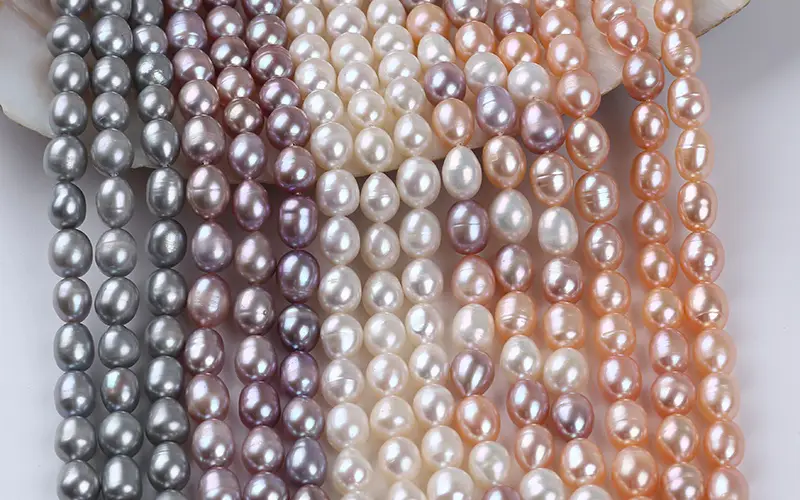
Color and Luster
- Shell Pearls:
They come in a wide variety of colors since they are dyed and coated during the production process. You can find them in an extensive range of hues, from traditional pearl colors to bold, rare shades like black, green, or blue. Shell pearls have a high reflective shine due to their polished surface, giving them a flawless look.
- Freshwater Pearls:
They come in limited colors, usually natural colors like white, pink, lavender, and peach. This is as a result of the mussel species and water conditions in which they originate from. Freshwater pearls have a softer, more subtle luster, with a natural glow. Their luster is more gentle and less reflective, giving them an understated beauty.
Durability
- Shell Pearls:
Shell pearls are known for their high durability due to the rigorous quality control in the production process. The protective coatings and polishing ensure the pearls maintain their color and luster over time. They are capable of withstanding sweat, perfume, and environmental damage. Also, their synthetic nature makes them more resilient to wear and tear, meaning they can be used as everyday jewelry.
- Freshwater Pearls:
Freshwater pearls are more delicate because they don’t have protective coatings like shell pearls. Over time, they may be affected by exposure to sweat, perfume, and environmental damage, which can cause their color and luster to fade. These pearls require more care to maintain their natural elegance.
Price
- Shell Pearls:
These types of pearls are much cheaper than freshwater pearls due to their unnatural nature and controlled manufacturing process. The variety of sizes and shapes makes them a budget-friendly option for people who want natural pearls without the high cost.
- Freshwater Pearls:
These pearls are generally more expensive than shell pearls, but still less costly when compared to saltwater pearls like Akoya or Tahitian pearls. The price of freshwater pearls varies depending on the size, luster, shape, surface, type of pearls, and nacre quality.
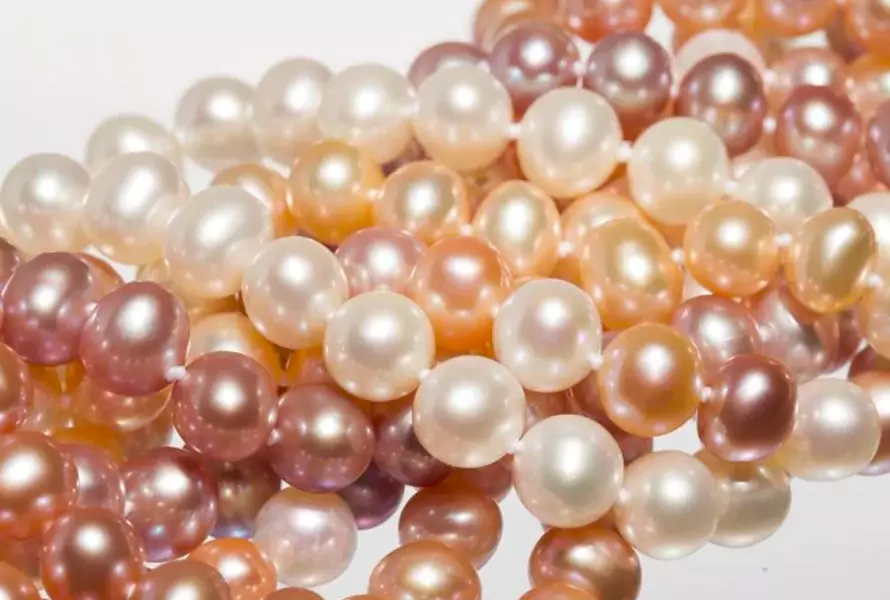
How Much Do Freshwater Pearls Cost?
The price of high-quality freshwater pearls range from $15 to $5,000 depending on the nacre, color, luster, size, shape, surface, and tyes of pearl.
How Much Are Shell Pearls Worth?
Shell pearls are way cheaper than freshwater pearls. You can buy the most beautiful sterling silver jewelry with shell pearls for a very reasonable price, ranging from $5 to $100.
Aside from shell pearls and freshwater pearls, there are other types of pearls on the market. Here is a quick overview of their prices.
| No. | Pearl Type | Price |
| 1 | Shell pearl | $5 – $100 |
| 2 | Freshwater pearls | $15 – $5000 |
| 3 | Akoya pearls | $500 – $10,000 |
| 4 | Tahitian pearls | $2000 – $25,000 |
| 5 | South sea pearls | $3,000 – $100,000 |
| 6 | Sea of Cortez pearls | $3,000 – $100,000 |
NOTE: These prices are not fixed and may fluctuate depending on dealers and the factors affecting prices mentioned earlier.
Factors Affecting The Price of Pearls
The price of pearls is influenced by several factors, such as:
Nacre
This is the substance that forms a pearl. Pearls with thicker nacre are more valuable because they have better luster and durability. Also, the quality of the nacre indicates how long the pearl has been cultivated.
Color
Pearls are available in a variety of colors, including white, cream, lavender, and pink. Freshwater pearls with natural colors are usually more valuable than dyed ones.
For a deeper breakdown, you can also explore our detailed guide on pearl price list by pearl color – from the most to least expensive to understand how pearl colors impact value.
Luster
How well the pearl reflects light can determine the price. The more lustrous the pearl, the brighter and clearer the reflection, and the better the quality.
Size
The larger a pearl is, the more costly it is. Large pearls are very rare and take a longer time to form, making them priced higher.
Shape
Perfectly rounded pearls are extremely rare, making them more costly. While pearls with irregular shapes are still beautiful and evergreen, they are less priced because of their appearance.
Surface
Pearls with smooth, flawless surfaces are more expensive than those with blemishes or scratches. A clean and perfect pearl is hard to find because of the nacre coating process, thus they are more valuable.
Types of Pearls
Pear types are a crucial factor in determining the pearl’s price. Naturally occurring pearls are harder to find than man-made pearls, which makes them more expensive.
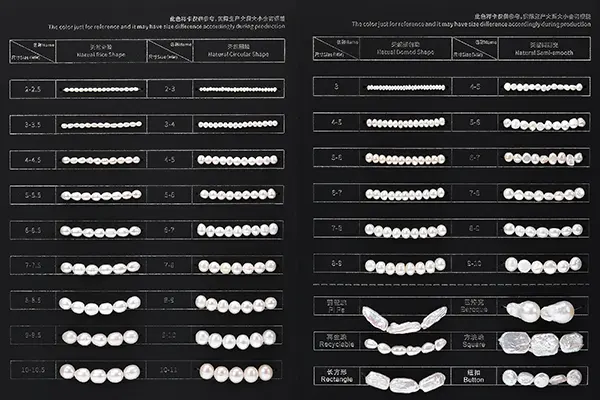
How to Choose the Type of Pearls for Small Brands?
Now that we’ve discussed the differences between shell pearls vs freshwater pearls, which is the best option for small and start-up brands? Consider the budget, durability & design flexibility, and brand positioning.
Budget
Shell pearls are often cheaper than freshwater pearls, making them a great choice for small brands, especially those seeking to create luxurious pieces at a lower cost. As the business grows over time, additional funds can be invested to slowly upscale to selling freshwater pearls. With this, your product line radiates more elegance and authenticity. You can get a pearls sample card to know the types of pearls you can afford and how they align with your brand.
Durability & Design Flexibility
Shell pearls are man-made, making them highly durable and resistant to wear or tear. They can be chosen by brands seeking uniform size, color, and shape, so it’s easy to work with for creating consistent designs.
Freshwater pearls, on the other hand, are more delicate. But they can be chosen by brands who appeal to customers looking for elegant, rare pieces with a softer, more natural look.
Brand Positioning
You can also make a choice between these two pearls based on your brand positioning. If your brand is focused on accessibility, with shell pearls, you can provide a wide range of designs at affordable prices. But if your brand is focused on the luxury or boutique niche, freshwater pearls are the best option to actualize your business goals. This comes with higher price points.
Key Takeaway
Shell pearls vs freshwater pearls is a popular debate among jewelry lovers. While both look beautiful and add extra glamor to fashion, they are very different from each other in terms of their origin, appearance, size & shape, color & luster, durability, and price.
You can contact a professional custom jewelry manufacturer to get the type of pearl that aligns with your business needs more.
